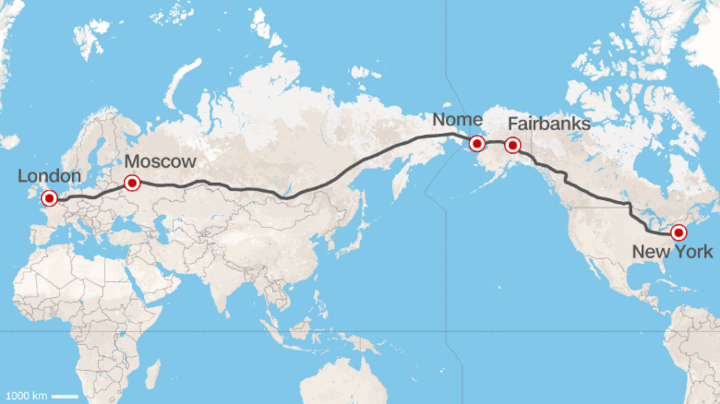
It’s been theorized that, long ago, the region known as Beringia connected the two land masses that would become the continents of Asia and North America. It’s also theorized that this land bridge is how humans spread themselves across the world as we know it today. Bringing our past inline with our future, some are now proposing a massive trans-Siberian highway to once again reunite these long-separate continents.
Yes, a highway … as in, by car. According to the Siberian Times, the President of the Russian Railways company Vladimir Yakunin has presented his proposal to build a roadway that would link the existing highway networks of Europe, Asia, Russia and the United states with a new roadway that would run alongside the existing Trans-Siberian Railway.
While the railway has run across the vast expanse of Russia and connected Moscow with the far east for nearly century, the proposed road would be new. Deviating from the Moscow-to-Vladivostok route (with connections to Japan), the road would then head north, across over 55 miles of Bering Sea. It would then connect with another new roadway constructed in remote regions of Alaska.
In theory, the route would allow a drive from London to New York and would cover over 13,000 miles. That’s a lot of bathroom stops.

The proposal is as ambitious as it sounds — likely costing trillions of dollars — with issues like the whole Bering-Sea-crossing part not fully fleshed out. The smallest distance from Siberia to Alaska is only 55 miles, but that’s still a long bridge, tunnel, or ferry ride.
People have proposed building some sort of Bering Sea crossing for over 100 years, but the difficulties of undertaking what would be a difficult and treacherous project in an arctic region with only five months of annual sunlight have kept it from happening. Throw in the turnover in technology since then and the cultural growing pains we’ve gone through, and its easy to see how its been sideline for this long.
Still, it’s something that hasn’t been done before. The chance to re-explore the world in a new way would be worth it in itself, as tons of new records would then be available for the taking (first drive, first bus, first bike ride, etc.). Heck, we’d be up for what would be the ultimate road trip in a heartbeat … once they had the infrastructure worked out, that is.
Right now, it’s little more than a pie-in-the sky idea, but if anyone could get a project like that rolling, it would be the president of one of the three largest transport companies in the world. We’ll get our mix tapes prepared in the meantime.
Top graphic courtesy of CNN


